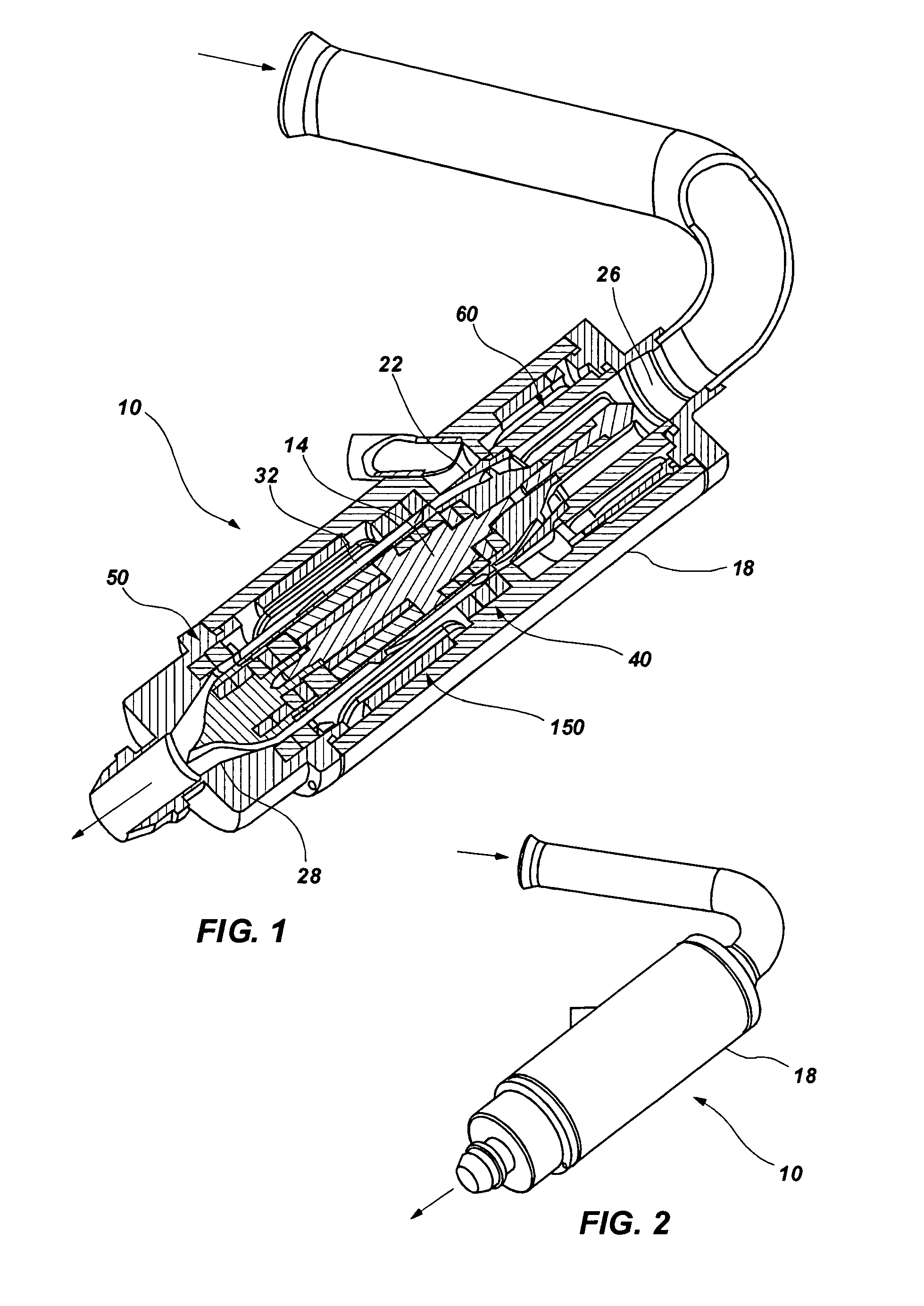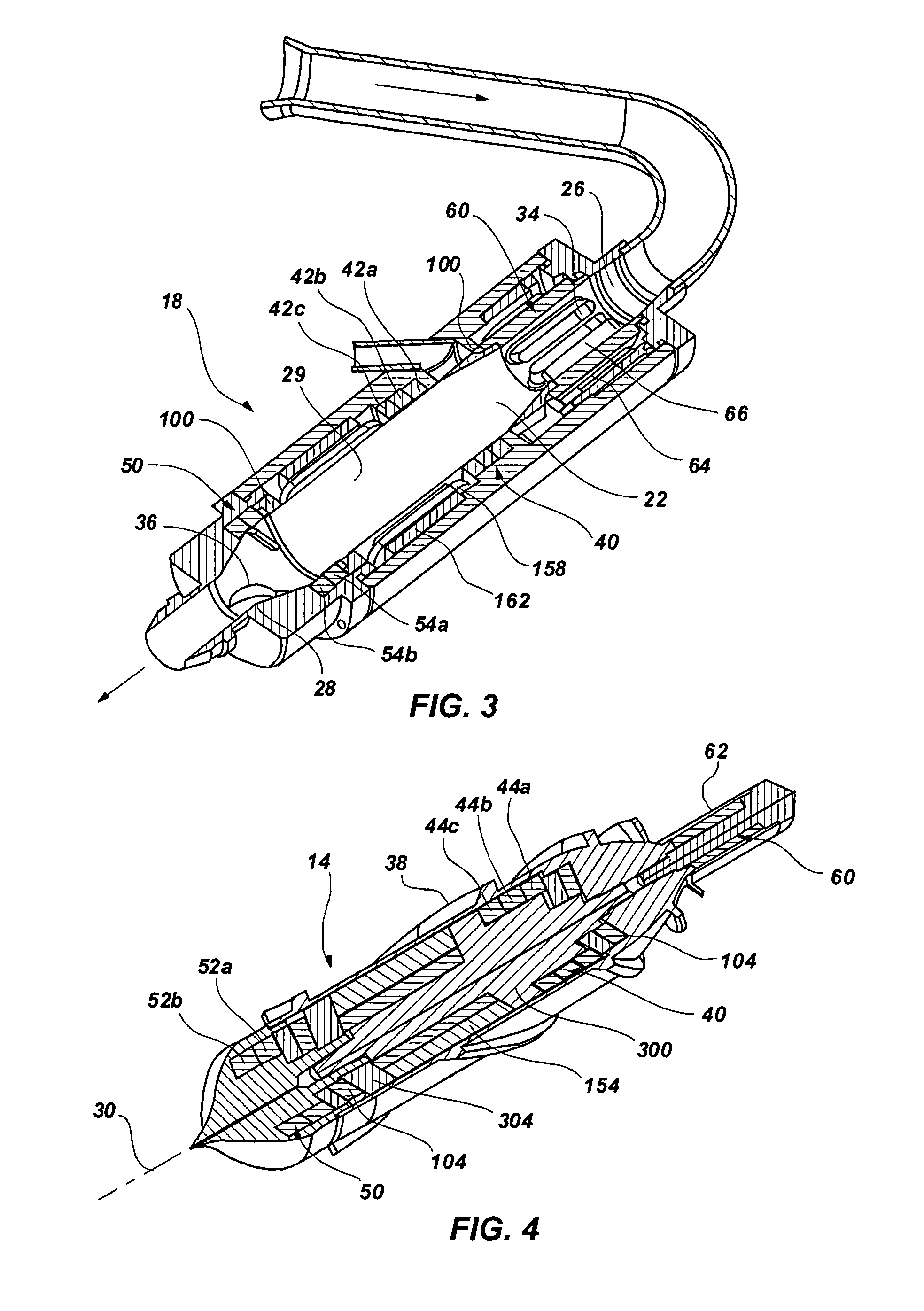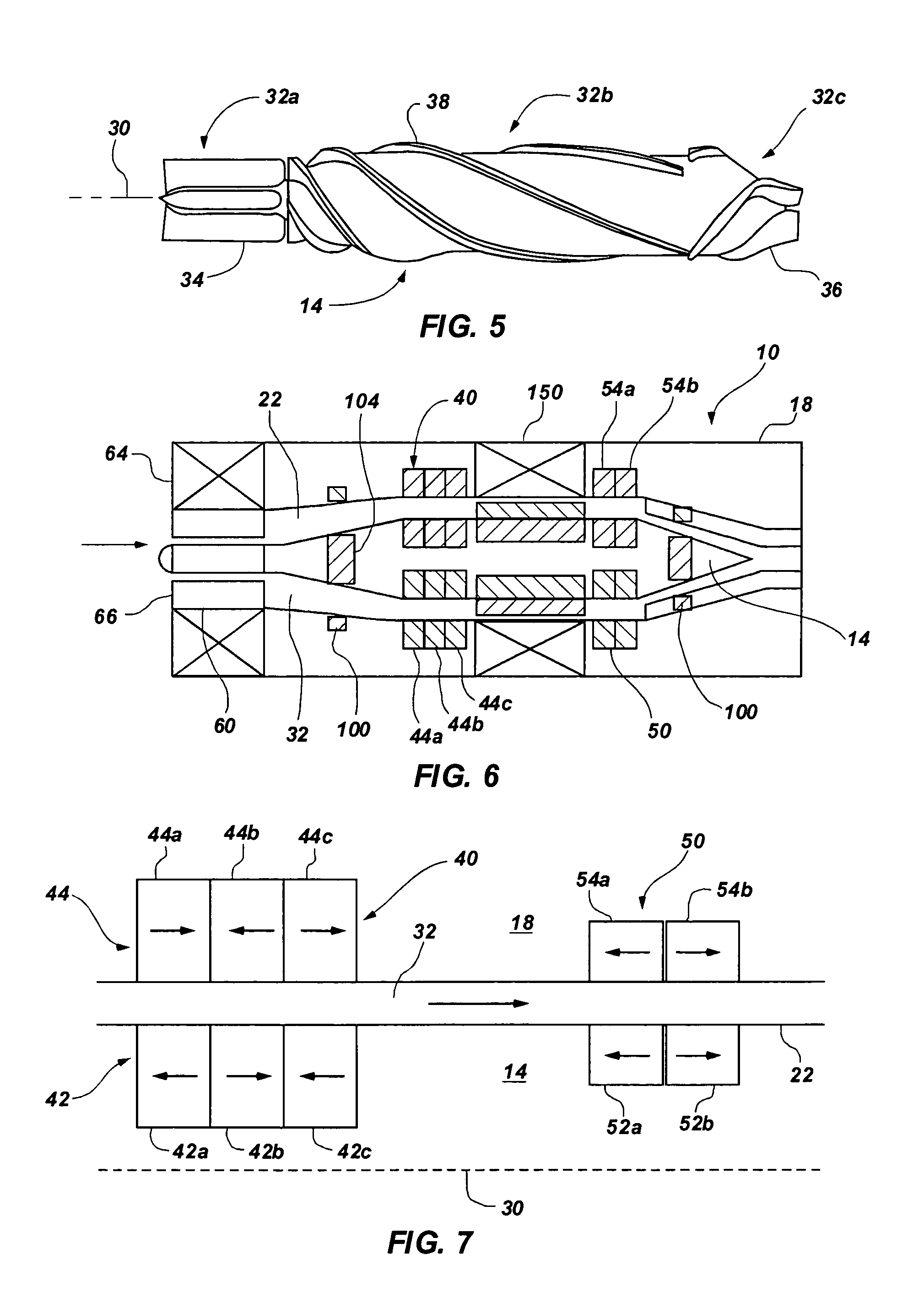Due to a limited number of donor hearts available each year (˜2,500), CHF patients often require MCS as a bridge-to-
transplantation and many such patients may fail to survive awaiting a donor organ.
Despite the tremendous need for an effective ventricular assist pump, prior MCS devices have not been entirely successful due to several limiting factors.
Particular concerns and design limitations of current
blood pump designs include: 1) component durability and lifetime; 2)
blood clotting or
thrombosis due to flow stasis within the pump in secondary flow areas, wash ports, and recirculation regions, and
platelet activation in regions of
high shear stress; 3) blood trauma or
hemolysis that may occur when blood contacts mechanical bearings or foreign surfaces, and when blood is subjected to higher than normal shear conditions due to rotating components; 4)
percutaneous leads which are needed for the motor and bearing control systems and other support lines; 5) pump geometry (size, shape, and weight) for ease of implantation, patient mobility, avoidance of graft
tears; 6) high cost of the pump; and 7) high
power demand that requires a large power supply.
These pulsatile pumps, however, have proven to be very complicated mechanically, are relatively large and have relatively short mechanical lifetimes. An alternative design using a
rotary pump leads to the use of the
mechanical heart as a
ventricular assist device which does not require explantation of the native heart.
Studies have shown several problems with poor rotary
blood flow path design in both axial flow and centrifugal flow blood pumps including those with magnetic suspension.
One of these problems is stagnation resulting in
thrombosis or clotting.
Another problem is
hemolysis, where blood is exposed to high shear stresses in the
rotary pump, usually near the impeller blades which move at relatively high speed, and which may cause direct or delayed damage to the circulating blood.
As the impeller applies forces to the blood, regions of turbulence and / or jet formation, can occur in poorly designed devices.
There are many disadvantages to this type of pump.
Seals for the external
lubricant are notoriously susceptible to wear and to fluid
attack which may result in leakage and the patient having a subsequent seizure.
Also, an additional pump is needed for delivery of the
lubricant to the bearing, and if it fails the lubricated bearing freezes.
Finally, the mechanical bearings have a finite wear life, usually of a few years, and need to be replaced due to the
bearing wear.
Also, there have been reported cases of thromboembolism in some patients.
It is believed that the large thrust disk obstructs the blood path and creates a tortuous blood path which is far from straight through the pump.
Laser sensors cannot be used because they cannot “look through” the opaque blood.
Capacitance probes require an electrical path between the stator and rotor which is generally not feasible with blood pumps.
There are several problems associated with the use of an
eddy current or
inductive sensor types in the gap in between the stator and rotor of an implantable miniature blood pump.
One problem with these types of sensors is the possible
contamination of the
blood stream if the soft iron or other non-biocompatible sensor faces are exposed to the blood.
Other problems are space constraints required for the sensor, and the energy budget required for such sensors.
There is no
brush wear so the expected life of such pumps is very long.
One issue with such pumps is assuring that the motor will start in the necessary direction for the impeller to pump.
The proper
start up direction of rotation can be an important issue.
Active magnetic bearings can be composed of soft iron magnetic materials which have a significant limitation in that they are subject to magnetic saturation at a certain level, typically at about 1 Tesla.
Further, there are limitations on this type of bias
linearization which prevent the full utilization of the magnetic force capacity of the active
magnetic bearing.
Another issue with regard to proper centered operation of the
rotary pump impeller is the unbalance in the rotor.
Rotating devices are subject to mechanical unbalance as it is difficult to manufacture a perfectly balanced rotor.
In addition, during operation within the patient over a long period of time, additional changes in unbalance may take place due to rotor component shifting, rotor
rubbing, blood or blood products adhesion to the impeller surfaces, and other factors.
Higher bias current levels result in
higher power consumption and higher heating.
It has been found, however, that centrifugal flow pumps are not easily implantable in either animals or humans because the inflow and outflow cannulas are located at 90 degrees relative to each other and in separate planes.
In addition, such centrifugal pumps require convoluted secondary
blood flow paths as part of the design.
 Login to View More
Login to View More  Login to View More
Login to View More 


